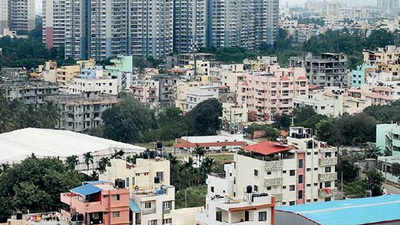The Hindu 28.12.2013
Corporation property tax to go up from next fiscal
New regime may have retrospective effect from April 1, 2013
Property tax for residential and commercial buildings in
the Kozhikode Corporation limits will undergo a major revision from
next fiscal. The new tax regime, which is expected to have retrospective
effect from April 1, 2013, is being adopted after 20 years in the city.
Deputy
Mayor P.T. Abdul Latheef said that the process of revising the tax
structure had already began at the Corporation office. The council had
approved the notification revising the taxes. However, the new rates
would be notified only after obtaining suggestions and opinions from the
public.
The implementation of the new system will
also see the existing revenue wards switching over to the electorate
ward. As of now, the revenue and electoral ward numbers are different.
For example, the revenue ward number of Malaparamba is 34 while its
electoral ward is 8.
Expanded boundaries
The
new numbering system has been considered after the merger of Elathur,
Beypore, and Cheruvannur-Nallalam grama panchayats to extend the
boundaries of the city. Now the Corporation has 75 wards and the total
area of the city is 118.5 sq km (earlier 84 sq km).
Before
the merger of these three grama panchayats, the Corporation authorities
had made attempts to revise the tax structure and new houses numbers
had also been given. (Then Malaparamba had been identified as ward 5,
both as the revenue and electoral number). Now this would be cancelled
and new house numbers would be given, Prof. Latheef says.
The
revised property tax is based on the carpet area of the building unlike
the existing system calculated on the annual rental value. The tax
structure has been finalized on the basis of the guidelines issued by
the State government. The building owners should then calculate the
property tax based on various norms.
Prof. Latheef
said that owners of houses and commercial buildings had been paying tax
that had been calculated in the old and unscientific system since 1994.
There are cases of households remitting a tax as low as Rs 9 a year. Now
the minimum tax to be paid a year would be raised to Rs 50. However,
the hike in tax would be between 25 and 60 per cent of the existing
rate.
Exemption
Houses
having an area of less than 30 sq m would be exempted from paying taxes.
This would be applicable for houses constructed with the assistance of
State and Central aided funds.
He said that the
revision in property tax would not make a big difference on houses and
commercial buildings that had been constructed in the last four- five
years. The tax structure of these buildings had already been calculated
on the carpet area.
The city has been divided into
primary, secondary and tertiary zones. An area having a government or a
quasi-government office, educational institution, commercial complex,
market, bus station, railway station and hospital will be in the primary
zone.
The places surrounding a primary zone with
potential to evolve into developed areas will be in the secondary zone.
Areas not coming under either category will be in the tertiary zone.
House owners have to make their own assessment of the property tax. This
will be verified by the revenue officials, Prof. Latheef said.
The
general tax rate fixed for an area in the primary zone is in the range
of Rs.8 to Rs.20 a square metre (1 sq m = 10.76 sq ft) for residential
buildings. Buildings in the secondary zones will get a 10 per cent
concession on rates and those in the tertiary zone, 20 per cent.
Similarly concessions would be given based on the locality of the
building; the materials used, including roofing and flooring types, age
and carpet area.
At the same time higher rates have been fixed for buildings with areas between 200 sq m and 300 sq m and above 300 sq m.

